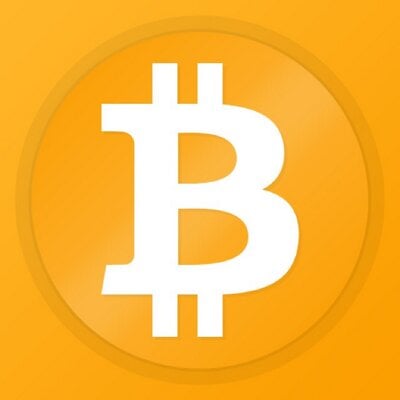Grayscale: Exploring the Momentum Behind Bitcoin's New Price Highs
Original Title: 《Market Byte: bitcoins price reaches new all time high》
Written by: Grayscale Research Team
Compiled by: Yvonne, Mars Finance
- On March 5 (Tuesday), the price of Bitcoin briefly surpassed the historical high of $69,000. Although the direct reason for the rise was the inflow of funds into the US-listed spot Bitcoin ETF, the marginal demand ultimately reflects investors' interest in Bitcoin assets, viewing it as an alternative "store of value" and decentralized computing network.
- The active traders' positions in Bitcoin now seem quite substantial. The valuations of ETH and most other tokens remain below the highs of the previous crypto cycle.
- If the macro market backdrop remains favorable, we may see further increases in token valuations, but macro factors could also become adverse.
On Tuesday, Bitcoin's price reached an intraday high of $69,325,000, exceeding the $69,000 high calculated in USD on November 10, 2021. In the previous weeks, Bitcoin's price in other major currencies (such as euros, yen, and yuan) had already reached historical highs. Since the cycle low of $15,600 on November 21, 2022, Bitcoin's price in USD has risen by approximately 330%. Additionally, due to the gradual increase in the number of circulating tokens over time, Bitcoin's market capitalization has increased by 340% during the same period (from November 21, 2022, to now).

Why has the price of Bitcoin rebounded so quickly? According to Grayscale Research, the direct reason for the recent rise in Bitcoin's price is the demand for spot Bitcoin ETFs listed in the US market. Since their launch on January 11, these products have attracted nearly $8 billion in net inflows, a figure that far exceeds the pace of new issuance, even before we welcome the Bitcoin halving in April (for more details, please refer to our report "2024 Halving: This Time It's Different"). In our view, the imbalance between the growing demand for ETFs and the limited new Bitcoin supply may have led to the rise in Bitcoin's price.
While spot Bitcoin ETFs provide a new product structure for cryptocurrency investment in the US, the marginal demand for Bitcoin ultimately reflects investors' interest in Bitcoin as an alternative medium of exchange and decentralized computing network.
We believe that Bitcoin is a macro asset that can compete with the US dollar and physical gold (two traditional "stores of value"). The Federal Reserve has signaled that it may lower interest rates this year, and both parties in the US seem to be focusing less on controlling the massive budget deficit during peacetime. Lower real interest rates and rising public sector debt could put pressure on the value of the dollar and support competing assets, including Bitcoin. Additionally, for some investors, Bitcoin may have advantages over physical gold, such as being easy to carry: as long as the holder can access the internet and hold the private key, Bitcoin can be used anywhere in the world. In our view, the rising demand for Bitcoin primarily stems from investors' concerns about the mid-term outlook for the dollar and their search for an alternative "store of value" asset. Notably, the price of physical gold in USD also reached a new high on Tuesday.
Furthermore, over time, technological advancements have expanded the potential use cases of the Bitcoin network. Ordinal inscriptions began in December 2022 as a way to inscribe non-fungible tokens (NFTs) onto the Bitcoin network and have rapidly evolved into one of the largest NFT networks (see Figure 2). The emergence of Ordinals has not only encouraged new users to try Bitcoin but has also stimulated innovation among those who see potential for other types of use cases, such as trustless Bitcoin-backed stablecoin loans and greater use of Bitcoin in decentralized applications. Given that transaction fees on the main chain are rising, multiple L2 projects have begun developing on Bitcoin to enhance scalability and use cases. There is evidence that more people are starting to adopt cryptocurrencies: since the third quarter of 2023, the total value of cryptocurrencies has increased from $160 million to $2.7 billion, growing 15 times in just a few months.

Various market indicators suggest that the positions held by active cryptocurrency traders are currently quite substantial. Funding rates (which measure the cost of trading leverage) have risen to the high end of recent ranges (see Figure 3) but remain below the highs of the previous cycle. Futures open interest has also risen to its highest level since the fourth quarter of 2021. Finally, the increase in Google search volume for the popular compliant trading platform Coinbase may also indicate a return of retail investors. The cryptocurrency options market is pricing in increased downside risk: implied volatility and negative skew (i.e., the price of put options is higher than that of call options) have both risen.

Although Bitcoin has surpassed its previous historical high, most other cryptocurrencies have not yet broken through. For example, ETH is still down 21% from its historical high in November 2021 (based on closing prices). For the remaining assets within our cryptocurrency industry framework (excluding BTC and ETH), token prices are still approximately 70% lower than their historical highs.
The crypto cycle from 2020 to 2022 reminds us that downturns in the crypto market can be significant: Bitcoin's price fell 77% from peak to trough. While investing in Bitcoin has provided stable returns in the medium term, this asset has also experienced significant declines and volatility. Bitcoin is a high-risk, high-return potential asset with a low correlation to stocks. Therefore, it can be a useful component for diversifying certain investors' portfolios. As we discussed in our latest monthly update, if the macro market backdrop remains favorable, we may see further increases in token valuations in the coming months. Conversely, a less favorable macro outlook—such as Fed rate hikes or economic recession—could suppress cryptocurrency valuations.











